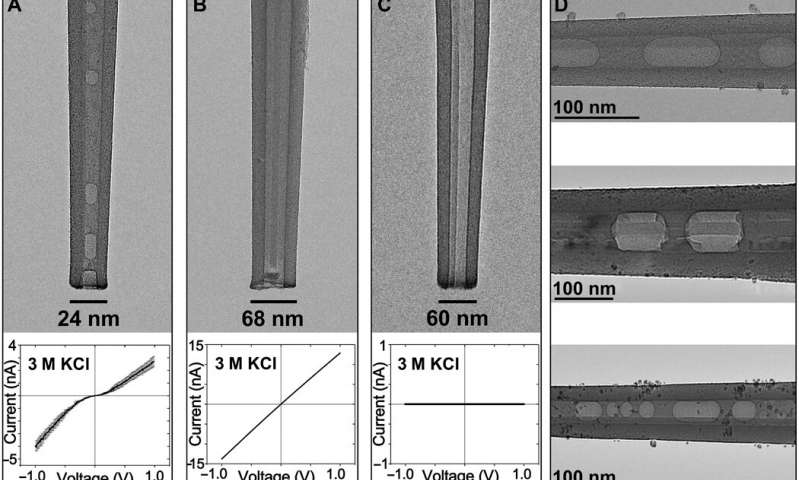Nanofluidic platforms can offer tunable material
transport for biosensing, chemical detection and filtration.
Research in the past had achieved elective and controlled ion
transport based on electrical, optical and chemical gating methods
of complex nanostructures. In a new report now published in Science
Advances, Jake Rabinowitz and a team of researchers in electrical
engineering, biological sciences and biomedical engineering at the
Columbia University, New York, U.S., mechanically controlled
nanofluidic transport using nanobubbles. They mechanically
generated the nanobubbles made stable via surface pinning and
verified them using cryogenic transmission electron microscopy
techniques. The findings are relevant for nanofluidic device
engineering and nanopipette-based applications.



